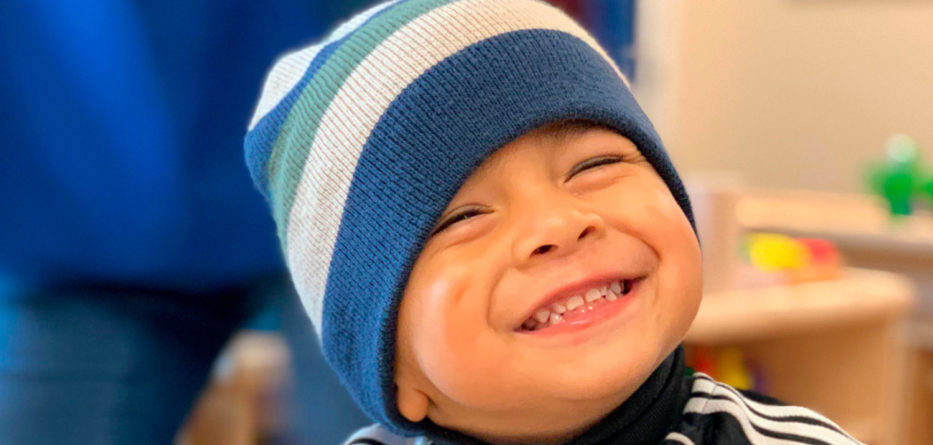Arturo Hilario
El Observador
Choice is a lesson we learn early in life. The way that this concept of choice is presented to the young can come in many forms. From what sort of blanket you’d like to lay down with, to the type of cereal that would be best for breakfast, the idea that we have options seems so normal as we grow, but to children it could be a big decision, one that could affect them the rest of their lives even.
A child education program in Santa Clara County has thought of a clever way of teaching toddlers and preschoolers this concept. Let them choose the type of learning they want. They will enjoy it better, have fun, and have the benefit of learning lessons while doing so.
SJB is a nonprofit organization that specializes in education centers that focus on bringing a child’s home and curiosity to the learning place. Since 1971, SJB has created learning centers that try to bridge the gap between young children and their eventual move to Kindergarten and beyond.
By presenting choices in learning curriculum to the child, as well as immersing their parents and guardians in the school happenings as well, the goal to merge both worlds and make it easier on learning is something the staff is very in tune with. In their experience, the better the union between home life and school life, the easier the opportunity to learn becomes.
The most recent SJB site sits at Robert F. Kennedy Elementary School in the Franklin-McKinley district, right off McLaughlin road in San Jose. Taking the remnants of a San Jose Headstart building, last June construction began on revitalizing the space to fit the needs of the future staff of SJB Kennedy Child Development Center and incoming children that would begin their year-round learning journey there.
Melissa Leza, Regional Director at SJB Child Development Centers was touring the center recently while she reminisced about the major changes that had taken place to turn the location from a fenced in, weed-infested ghost of a school into the charming, wood floor and warm colored learning space that is the SJB Kennedy Center today.
“When we first came in here, it was linoleum floors with paint. And we literally came, and we scrubbed, painted and put new floors and all new furniture. We just kind of wanted to create that homelike environment. An extension of a child’s home.”
The process ended up taking around six months of work.
SJB’s Executive Director Kelly Mercurio emphasized it as, “We were given kind of an abandoned building and just kind of had to plan out exactly what our vision was and slowly work through that one step at a time.”
But even with the original state of disrepair, the building was a stroke of luck and took creating the right partnerships to acquire.
“It’s actually really difficult to find available space for childcare. And so, we’ve been really fortunate because we have a partnership with the Santa Clara County Office of Education Headstart department. We partner to ensure that you know our most needy families in the community are being served,” said Mercurio.
The facility at Kennedy was part of a previous program that was no longer in operation. And so, SJB Kennedy Child Development Center was born, opening in February 2019 to a roster of children that filled up within the month.
The children at the school range from ages 3-5, with 44 preschoolers and 16 toddlers making up the attendance capacity.
They are separated by age groups to provide specific activities for each. The teaching style is that of ‘creative freedom as a study guide’, meaning they provide various options for children’s day to day lessons, and allow they themselves to learn with something within their interests.
If for example, a child really likes caterpillars, the staff will build a learning plan around that. With that in mind, Leza says, “So, we base our activities on caterpillars and in a creative study guides there’s activities that we can choose to enhance what the children are learning. And then the next week you may stick with caterpillars. So, one topic could last anywhere from two weeks to a month to a month and a half because we do it based on what the children are interested.”
The experience the development center wants to avoid is lack of interest, so if caterpillars are the best way to approach it, so be it.
“The last thing we want is this week we’re learning cars, and no one seems to care,” says Leza.
Other opportunities for free choice learning in the classrooms include a library, a dramatic play area, science area, paint station, and music experiences. All in total, these make up the center’s creative curriculum which tries to maximize the experience of learning.
One of the biggest emphasis at the center beyond the creative learning curriculum is creating a home environment conductive to learning.
“We want to create that consistency for the family and the children especially if they know it’s time to get up and go to school, they have their same activities throughout the day. The child now has this consistency year-round where that is not going to be off for a month or two and then have to come back and relearn this,” says Leza.
Part of the home life transition includes when the child starts and ends their school day. It is based on the parent’s schedules. If a parent works at 10am, the child will be dropped off at 9:15am to give the parent time to get to work. Now if the child’s parents are stay-at-home, or are job seeking, they will most likely leave to go home earlier than a child that waits for their parents to get off a 6pm shift.
Leza adds, “We want to make sure they’re provided the care. If a parent is seeking employment [etc.]. The[children] have less hours in a day but enough hours to provide that parent to go out and seek a job to be able to go to work and provide for their families.”
Family partner services are also embedded into the school’s fabric. This includes employment, food and housing services. It also includes mental health services and counseling for both child and family members.
The feedback for all the combined aspects of SJB are felt in the words the parents and children speak to the staff.
“One thing that I hear back from most of my parents that have followed me from other sites is more of, you know this is a family environment. They really feel like they can come and talk to any one of the teachers or the staff members. They feel they’re actually getting the quality care that their children should be getting while they’re working. That would probably be the biggest one is just the relationships that are built,” says Leza.
“We do allow them to bring their children to care if they’re going to school whether it be seeking employment for another job or a better job, or even if they’re incapacitated and unable to work for some reason, we’re able to provide care for them. So, in all around where we’re providing care for the children so that they can go and better their lives.”
Mercurio adds, “They thank us all the time. I mean the tributes, the stories that you hear are like, ‘If it wasn’t for you guys, we wouldn’t have been able to do what we’re doing today.’”
Four more SJB sites are planned in Santa Clara County, if the opportunity presents itself in terms of a building, they always hope to build near low income communities.
And in the end, that is the most important aspects of a system of early childhood education like the one at SJB. An intrinsic unity and respect between the child, the parent and educator, all for the benefit of the entire family.
For more information on SJB and their free and low-cost education and childcare centers, visit sjbcdc.org.






